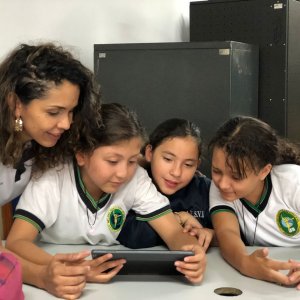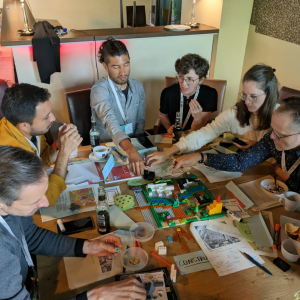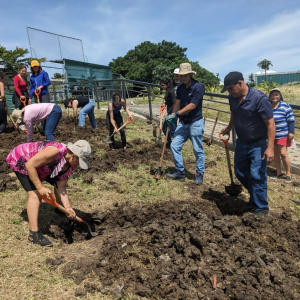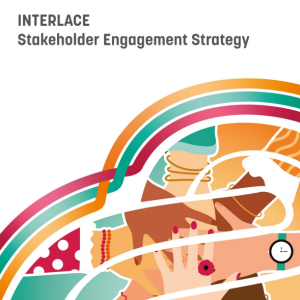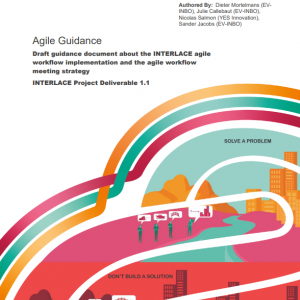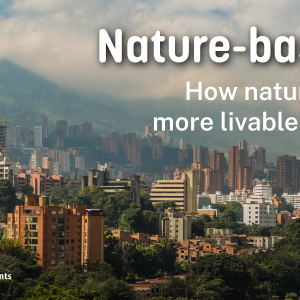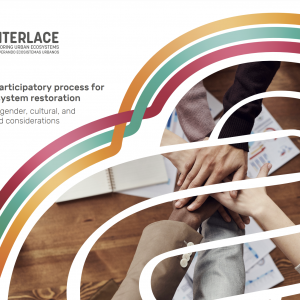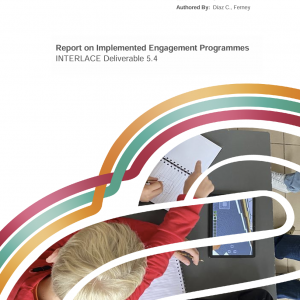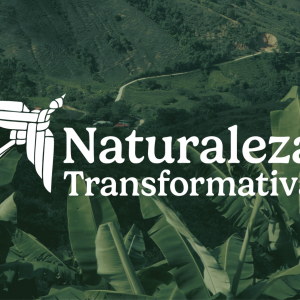Citizen engagement is crucial for the success and long-term impact of NbS and nature stewardship projects. However, engaging the public can be challenging, particularly for organizations with limited experience in participatory processes. This section provides guidance and resources to help make citizen engagement accessible, effective, and rewarding.
Why this matters
Nature-based solutions (NbS) are designed to address socio-economic and environmental challenges while enhancing human well-being. For these solutions to be successful, citizens must be actively involved—not just as beneficiaries but as co-creators and stewards. Engaged communities bring valuable local knowledge, skills, and perspectives that can shape and strengthen NbS projects.
Citizen engagement can also help secure political and financial support for NbS initiatives. When people feel connected to a project, they are more likely to advocate for it and contribute to its long-term success. Without meaningful engagement, NbS risk being imposed on communities without a sense of ownership, leading to resistance, underuse, or failure to achieve intended outcomes.
Common barriers
Despite its benefits, citizen engagement presents several challenges. Organizations often struggle with identifying who to involve, what methods to use, and how to sustain engagement over time. Technical and scientific concepts related to NbS can be difficult to communicate in ways that are accessible and relevant to different audiences. Limited financial and human resources can also make it challenging to organize effective engagement activities.
Cultural, linguistic, and socio-economic differences further complicate participation. In some cases, citizen engagement efforts may unintentionally exclude certain groups, reinforcing existing inequalities rather than addressing them. Additionally, organizations may be hesitant to engage the public due to concerns about conflicting opinions, opposition to NbS projects, or difficulties in managing diverse stakeholder expectations.
Key challenges and solutions
Successful citizen engagement requires a strategic and inclusive approach. Providing multiple pathways for participation allows people to engage at different levels, from learning about NbS to actively shaping and maintaining them. Calls to action—such as signing up for project updates, attending workshops, or volunteering—help guide citizens toward meaningful involvement.
A diverse engagement strategy ensures that NbS initiatives reach a wide audience. The INTERLACE project, for example, used community arts, citizen science, outdoor learning, and digital gaming to engage people in ways suited to their local contexts. These varied approaches expanded outreach, simplified implementation, and fostered innovation.
To be effective, engagement methods should also be well-integrated into NbS projects. Rather than treating engagement as a one-off activity, cities should embed participation into the full project cycle, ensuring that citizens feel connected to the outcomes. Linking different stakeholder groups—such as city authorities, community organizations, and local residents—can strengthen relationships and promote long-term stewardship of NbS.
Finally, organizations must provide ongoing support and follow-up. Citizens who contribute their time and expertise to NbS initiatives should receive training, mentoring, and recognition. Sharing project successes, celebrating contributions, and maintaining communication with engaged stakeholders builds trust and sustains interest beyond the initial project phase.
INTERLACE tools and resources
INTERLACE has developed several tools and resources to support municipalities and organizations in engaging citizens effectively:
- Module on citizen engagement as a tool to build local awareness and participation around NbS as part of the online course “Nature-based Solutions: How to regenerate nature to make neighborhoods more livable, biodiverse, and resilient to climate change”
- A report summarising the methods, outcomes and lessons learned from the INTERLACE Engagement Programme, featuring community arts, citizen science, outdoor learning, business insight and digital gaming
- Stakeholder engagement strategy, a reference guide for stakeholder engagement as used by the INTERLACE project, which contains good practice on engaging the wider public, agile workflow, stakeholder mapping and monitoring, and other relevant aspects of citizen engagement
You might also like to visit City NbS Toolkit section on designing and implementing participatory governance strategies, which relates to this topic
We’ve discovered that using gaming as a platform to engage young people isn’t only fun – it’s also very empowering.
By using Minecraft we’ve been able to connect schoolchildren with real-world environments they are familiar with; but in ways that have enabled them to re-imagine and re-design these environments with the inclusion of nature-based solutions that capture their priorities as young people, and also their values in relation to nature. It’s opened our eyes to many new possibilities for citizen engagement and we’ve had a lot of interest in this approach from school teachers, city planners, researchers and others. We’re very excited!
Paul Mahony, Oppla
